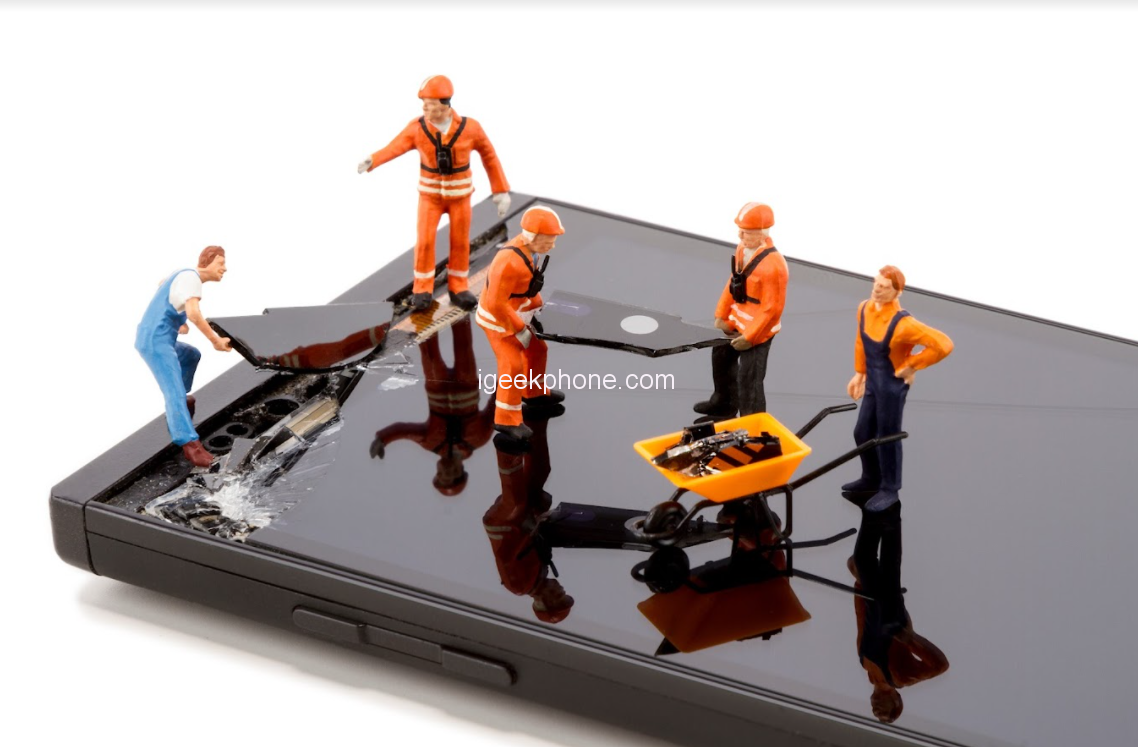Over 30 years ago, screens on mobile phones comprised a fraction of the phone itself, the rest being the Numpad or its tough shell. Today, the average smartphone screen stretches from end to end. You can basically touch the phone anywhere, and it’ll bring you to where you need it to be.

That said, such a design can be as much a downside as a benefit. It doesn’t take much force to break the screen, just a drop on the floor or hit against a rock-solid object. Fortunately, fixing a broken phone screen is one of the simplest things you can do, even with stuff you have at home. Here are several ways you can do that.
- Professional Repair
The first method is the most straightforward and has the highest likelihood of success. Nothing speaks peace of mind better than bringing a broken phone screen to professional repair services. They can either be a manufacturer-owned store or a third-party repair shop.
However, it pays to know that phone warranties usually don’t cover accidental damage, which happens most of the time. A manufacturer-owned store can still repair a broken phone screen, but it won’t be under warranty anymore. The only instance that the store can repair the phone under warranty is when the damage stems from a manufacturing defect.

That’s why your best bet most of the time is a third-party repair shop that has experience fixing phones of different makes and models. Some services don’t even require their customers to visit their shop, having them mail their broken devices instead. To know more, you can take a look at www.sydneymobilephonerepairs.com.au and similar websites.
Once receiving your good-as-new phone, consider investing in a screen protector, particularly a tempered glass one. It will still break upon impact, but they’re tough enough to keep the screen intact. On top of that, replacements for these things are far less costly than consistent repairs.
- Clear Packaging Tape
The following methods are mainly temporary fixes with varying degrees of success. Experts say you can consider these fixes under specific circumstances, such as when you’re due for a phone upgrade or repairing isn’t worth the expense (typically for old models).
The most basic of these methods involves taping the entire screen with clear packaging tape. A layer of it will be enough to keep the shards, which can cut your finger, in place. Furthermore, the clear tape will still enable you to use the phone, though selfies may suffer a drop in quality due to the tape going over the front camera.
- Clear Epoxy
A cracked screen gets worse the longer it remains unresolved. It may be a small crack at the side or corner today, but further phone use will make it stretch across the screen. Before you know it, you’ll have a phone with countless cracks and missing glass shards.
Fortunately, as one YouTube video attests, a USD$10 tube of epoxy can be effective in treating such problems. In the video, the repairer applied a small amount of epoxy over a fairly-extensive corner crack on a screen, waited for the epoxy to dry, and removed the excess with a razor blade. The crack didn’t entirely go away, but the seeped epoxy could prevent further cracking.
That said, the video also stated that such a fix isn’t recommended to fix an entire cracked screen. In that case, you’re better off having a professional swap the whole thing out or, at least, use the packaging tape method explained earlier.
Not The Best Ways
As mentioned earlier, professional fixes have the highest likelihood of success. Nevertheless, it won’t stop some people from looking for alternative methods on the internet to save. The tape and epoxy may not be the best fixes, but they carry less risk compared to the following ways:
- Toothpaste: This may be effective on scratches, but it’s too abrasive for patching up cracked screens and has a high likelihood of ruining the phone if you aren’t careful.
- Auto Glass Buffing: The cerium oxide in buffing products can be messy without the steady application of water, which can destroy the liquid crystal display underneath.
- DIY Screen Repair Kits: This requires extensive know-how in dismantling devices and may render some of the phone’s functions useless.
- Vegetable Oil: This won’t fix anything; if anything, it’ll leave you with a big mess once you put the phone back in its case.
Conclusion
Given today’s smartphones, the screen is perhaps the most crucial component. Physical damage can leave the rest of the phone underneath prone to the elements. Consider leaving the task of fixing a cracked screen to the professionals. If not possible right now, temporary fixes like clear packaging tape can help you buy time.









